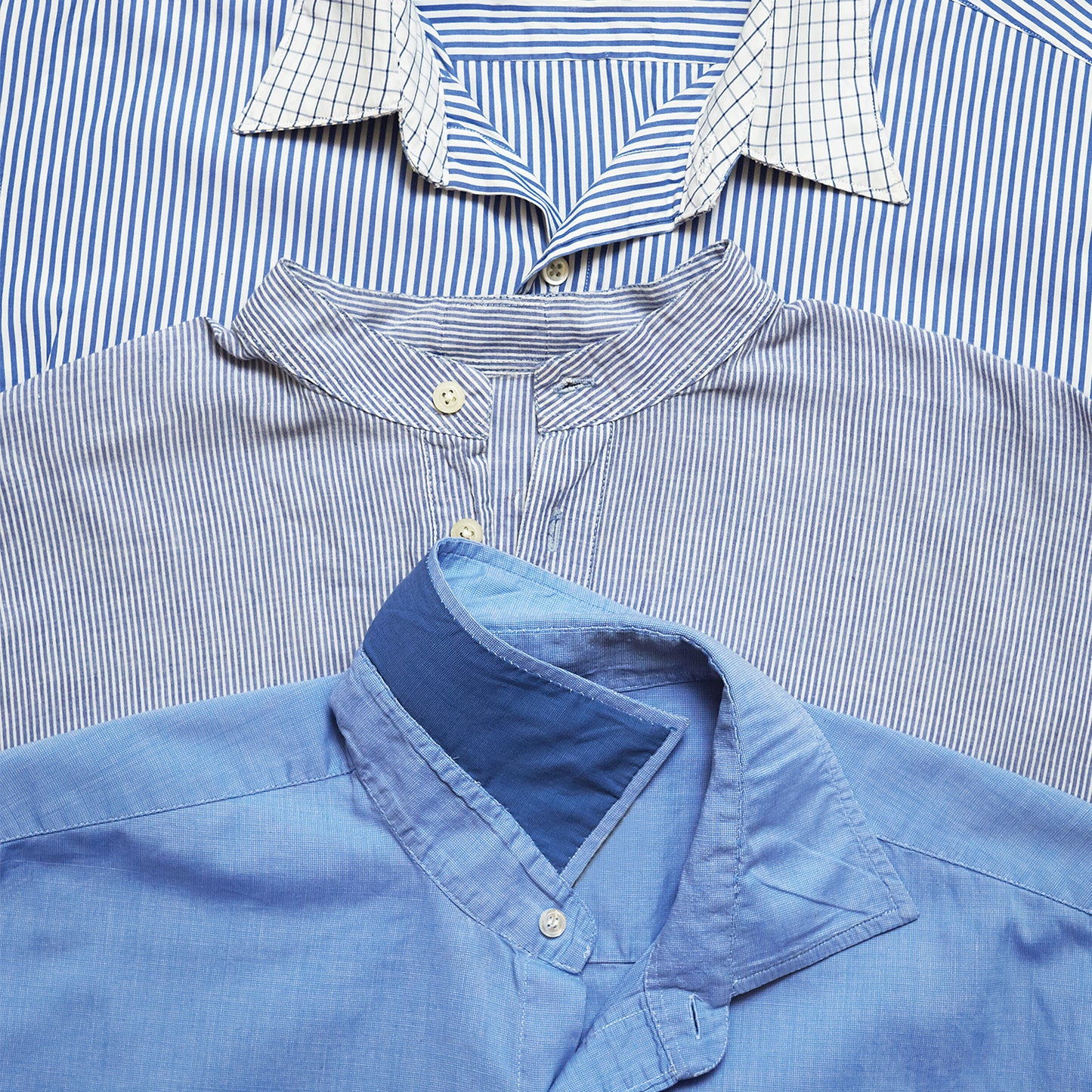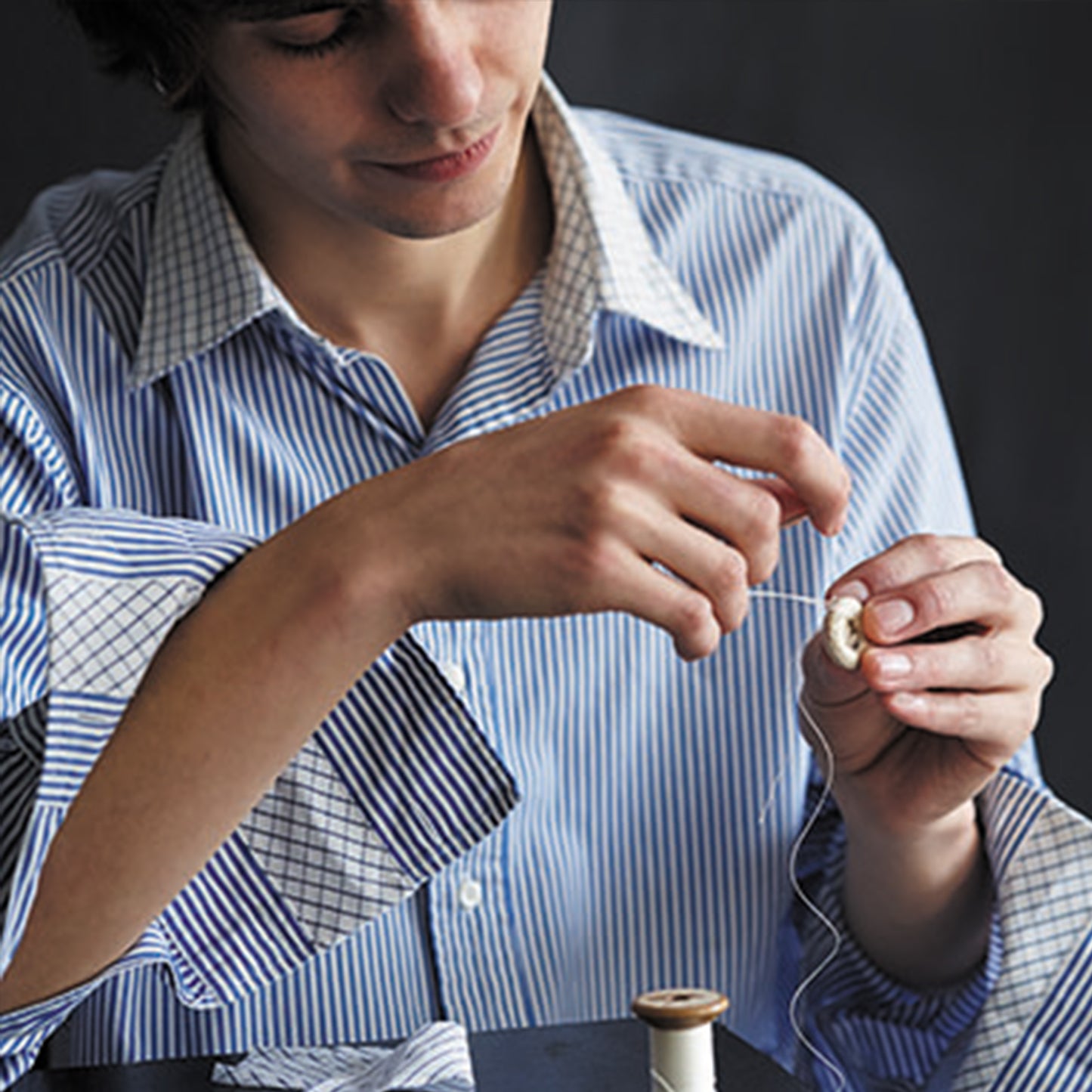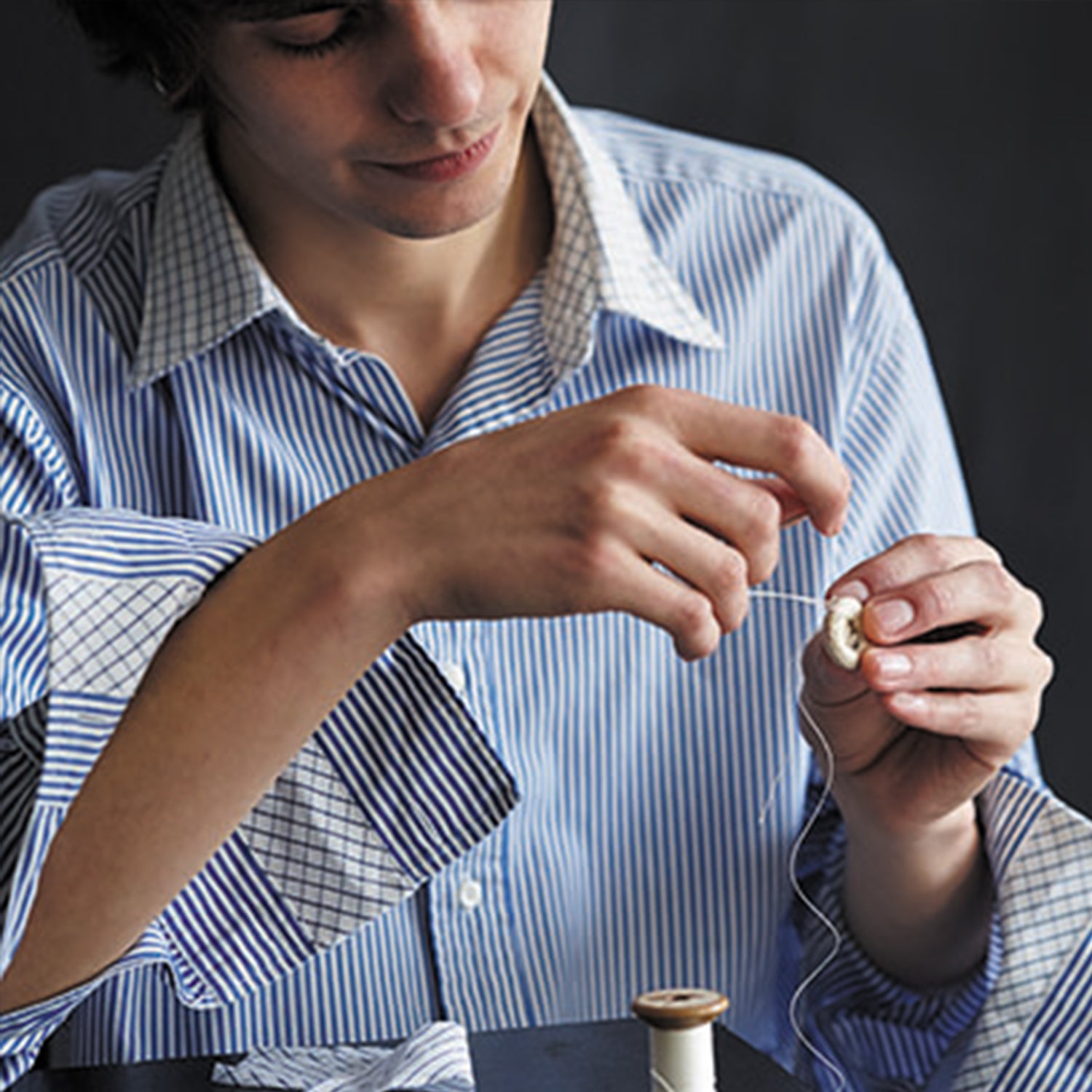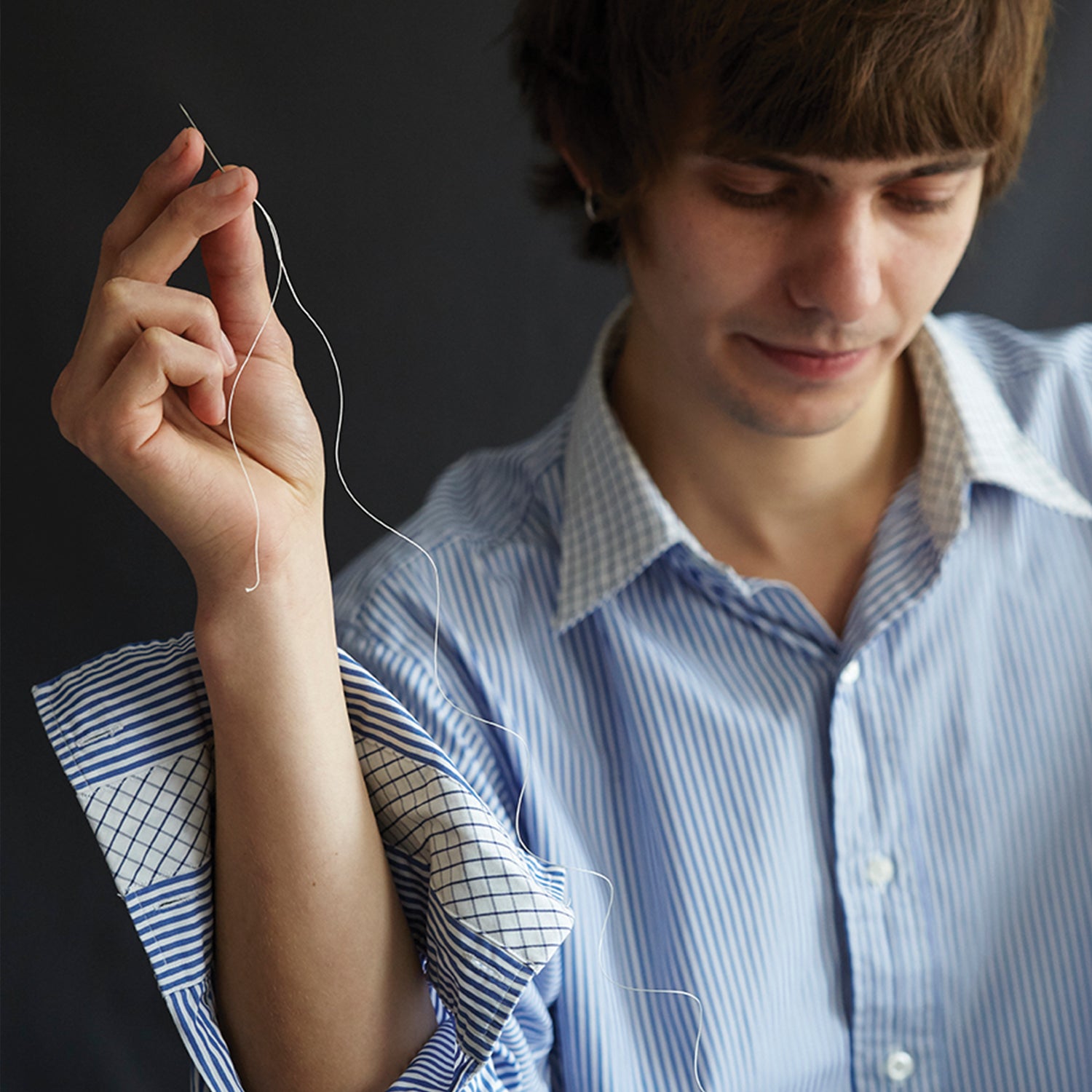How to Repair a Worn Shirt Collar with Katarina Evans and Katarina Brieditis
Any wear and tear in a shirt is usually noticed first on the collar and cuffs, even while the rest of the garment is still intact. Thankfully, this does not mean you need to discard the entire shirt because it is quite easy to do something about it. In the past, it was obvious how to fix worn collars. When you had your shirts sewn, or sewn yourself, an extra piece of fabric was usually saved for future repairs. It is a bit trickier, of course, to repair shirts today, because we buy them ready-made in stores without spare material, but by choosing a different fabric you can take the opportunity to give the shirt a new look. If you do not have another already discarded shirt to use material from, it may be an idea to look for a flea market find. If you do not want to change the look of your favourite shirt more than is necessary, you can often cut a piece of fabric from the bottom edge of the back of the shirt and use it to repair the collar. This of course assumes that the shirt is long enough to start with. If the shirt fabric is patterned, checkered or a solid colour it is possible to make a close to invisible repair of collar or cuff. If, on the other hand, the shirt is striped, the stripes may end up in the wrong direction, but it will usually still be just fine. For the most part, even the collar stand (the narrow edge that the collar is usually firmly sewn into and folded over) needs to be covered.
If only the top of the collar is worn, you can turn it instead. The worn side then ends up on the underside of the folded collar and can also be both strengthened and concealed under a lining. When choosing this method, it is good to see if the underside of the collar has seams for loose collar stays, the arrowshaped plastic pieces that are sometimes used to hold the points of the collars. Such stitches are difficult to unpick, and in this case they will now adorn the top of the collar. Of course, it is also good to simply cut away the worn collar and give the shirt grandfather collar (see the shirt in the middle of the image on the left.)
This project was featured in Issue 96 Nordic
Share



https://collarreplacement.com
Very insightful post. Shirts used to come with a spare collar and set of cuffs. For those not comfortable sewing there are services like shirtmakersinstitute.com that can replace a worn out shirt collar for you.
Thank you for your informative review of our 'How to repair a worn shirt collar' feature Jay. We are glad it was an interesting read for you. Best wishes Jane Laverty Customer Service Manager




